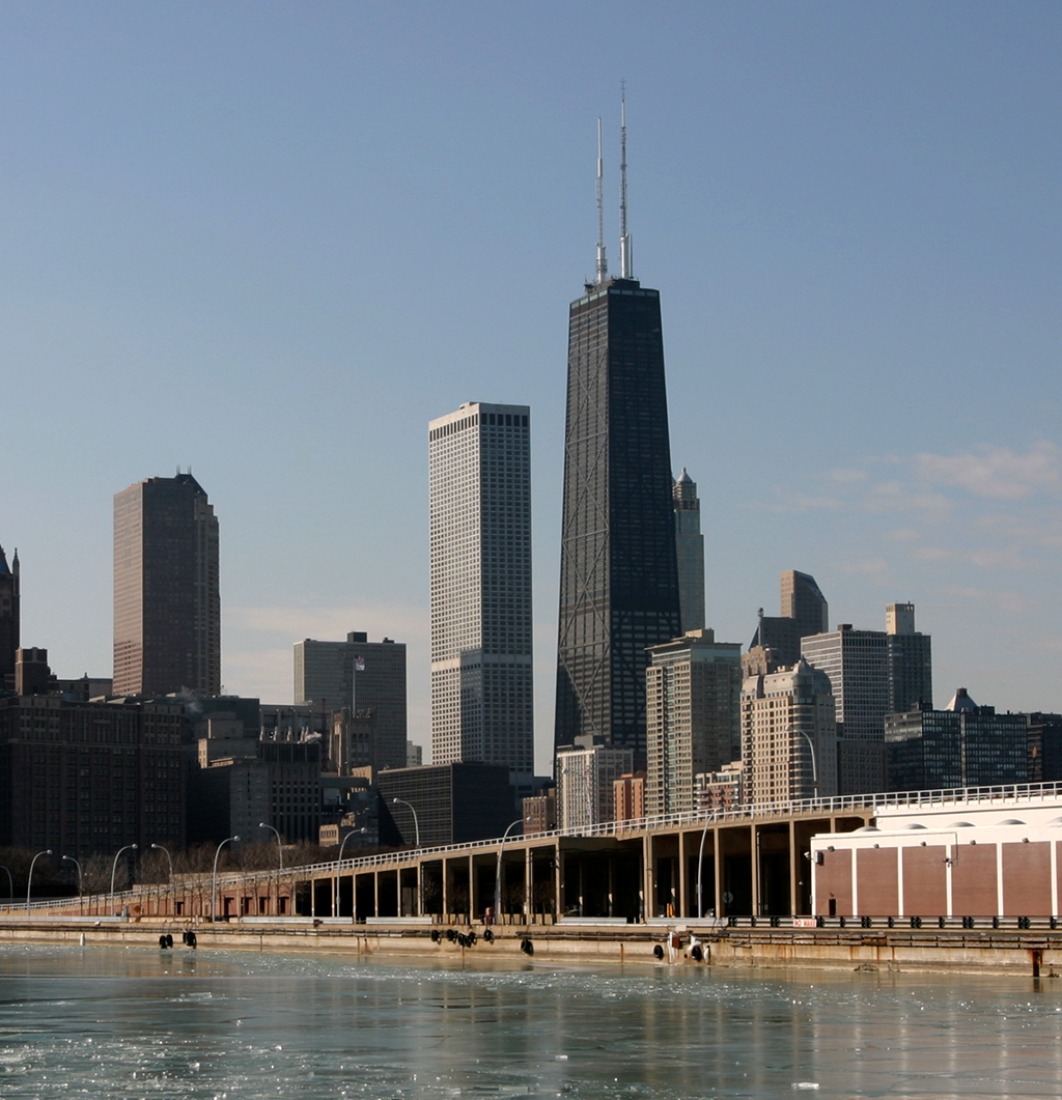The SOM office, initially, intended to make two separate towers, one 70 stories high just with apartments and the other with 50 floors for offices. But the idea was rejected because the towers would have occupied most of the plot spoiling both the privacy for residents and the entry of natural light into some parts of the buildings. For this reason it was decided to make the first attempt in history to gather in a vertical structure the traditionally separated uses: parking, office, dwelling and hotel.
Myron Goldsmith's thesis intended to optimize the use of the grid, replacing typical prototypes' models of Euclidean geometry with other, where the use of perimeter diagonals would enable efficient rigidity of the outer planes of the building, reducing the path of the reinforcements to the floor. This research led to the approach by Bruce Graham and Fazlur Khan, who replaced the inner tube, which was used in the skyscraper construction as a basic structural system, with a rigid perimeter frame built by the superposition of a triangulated grid and a conventional one, creating a hybrid model. At the same time, this lead to the creation of a lightweight tube as basic structural system, resulting in an open floor without columns and substantial savings in steel – 145 kg of steel per sqm compared to the 200-250 kg used in fifty-story buildings at that time – that is, less steel and twice the height of traditional buildings.
On the other hand, the John Hancock Center, is possibly the first example built that can be called Vertical City. The centre acomplishes the idea of a self- sufficient skyscraper, representing an alternative option to the model of centrality proposed by the Modern Movement regarding the relation between residence and work.
The privacy of the building increases with the height. The offices are located on the lower floors next to the lobby activities, associated to the public character of the building. The dwellings, located on the top of the building, have a dominance over the surrounding territory. The technical plants and observatories cut the vertical section, while public services and facilities are located on the lower floors. The dwellings' shared uses such as sports, leisure and community facilities are located on the deck.
Therefore, we can conclude that the John Hancock Center is a structural and spatial milestone among high-rise buildings, concerning both the structural system of the outer tube and its conception of layered mixed use.



















































